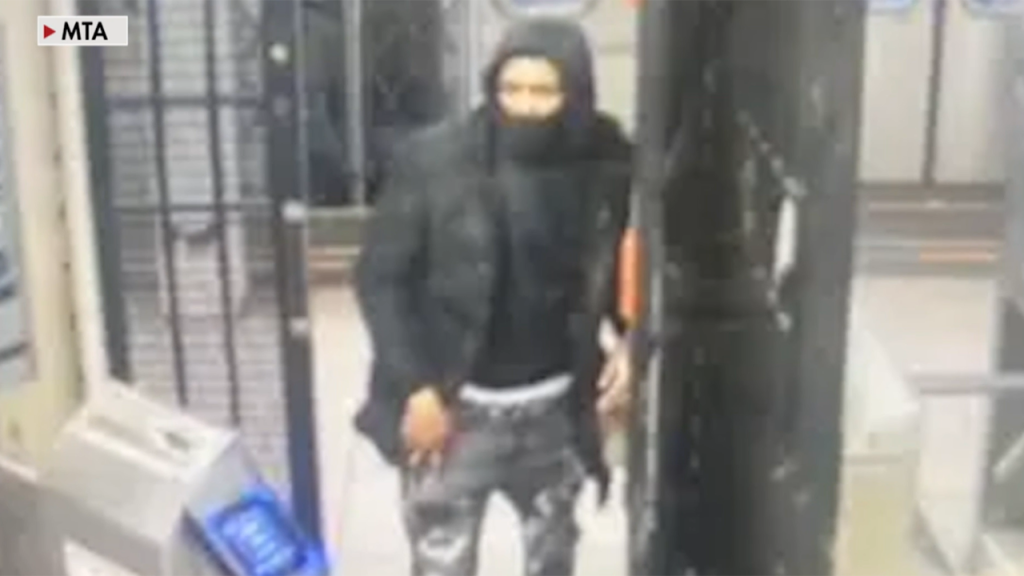The New York City subway system, the nation’s busiest and a vital artery of urban life, has recently witnessed a surge in violent incidents, culminating in a near-fatal attack on New Year’s Eve. A 45-year-old man miraculously survived being shoved onto the tracks at the 18th Street station just as a southbound 1 train was pulling in. The victim, reportedly looking at his phone and unaware of the impending danger, was violently pushed by a hooded male suspect. The horrifying ordeal was captured on video, providing chilling evidence of the unprovoked assault. While the victim sustained a head injury and was initially listed in critical condition, his survival has been described as a stroke of luck, with one law enforcement source attributing it to “God’s own hand.” The victim was later reported to be in stable condition at Bellevue Hospital.
The incident immediately triggered a swift response from the New York Police Department (NYPD), who received a 911 call reporting an assault in progress at the 18th Street station. Upon arrival, officers discovered the victim had been struck by the incoming train. The subsequent investigation led to the arrest of 23-year-old Kamel Hawkins, who has been charged with attempted murder in connection with the attack. The incident occurred against the backdrop of heightened security concerns surrounding the New Year’s Eve celebrations in the city. The NYPD had been operating under a “heightened threat environment” in anticipation of the festivities, but this incident underscores the ongoing challenges of maintaining safety and security within the vast subway network.
This harrowing event is not an isolated incident but part of a disturbing trend of violence plaguing the subway system. Just two weeks prior, on December 22nd, a 57-year-old woman named Debrina Kawam was tragically killed after being set on fire while sleeping on a train in Brooklyn. A man has since been charged with murder and arson in connection with her death. These two incidents, occurring within such a short timeframe, have fueled growing anxieties about the safety of the subway system, raising questions about the effectiveness of current security measures. The subway, a lifeline for millions of New Yorkers, has become a stage for random acts of violence, leaving commuters on edge and prompting calls for increased protection.
The near-fatal pushing of the 45-year-old man highlights the vulnerability of subway riders, especially during off-peak hours or when they are distracted, as the victim was in this case. The seemingly random nature of the attack further amplifies the sense of unease and insecurity among commuters. The fact that the victim was engrossed in his phone underscores a common scenario in modern life, where individuals are often less aware of their surroundings due to technological distractions. This vulnerability makes them potential targets for opportunistic criminals or individuals with malicious intent.
The attack also raises broader societal concerns about mental health issues and their potential link to violent behavior. While the motive behind the shoving incident remains unclear, it brings to the forefront the need for greater attention to mental health services and support systems, particularly for individuals who may pose a risk to themselves or others. The prevalence of homelessness within the subway system also contributes to the complex web of challenges facing the city. In a previous incident, unrelated to the recent attacks, a homeless man tragically caught fire in a Manhattan subway station, further highlighting the precarious conditions faced by this vulnerable population.
The string of violent incidents in the New York City subway has prompted calls for intensified security measures and a renewed focus on addressing the root causes of such acts. Beyond increased police presence and surveillance, there is a growing recognition of the need for comprehensive strategies that address mental health, homelessness, and other social factors that contribute to the problem. The subway system, a crucial component of New York City’s infrastructure, must be a safe space for all who rely on it. Restoring a sense of security and preventing future tragedies requires a multi-faceted approach that encompasses both enhanced security measures and a commitment to addressing the underlying societal issues that contribute to violence.



